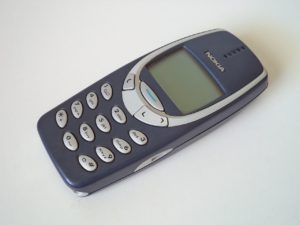Are you shopping around for a new smartphone? Make sure you avoid these top seven mistakes that smartphone buyers often make:
-
Not waiting for the new model
 It’s understandably hard to wait around when you’re in the market for a new smartphone, but being too impatient can be a big mistake when you’re shopping for your new device. Not only does waiting until the latest smartphone model is released give you the chance to take advantage of notable improvements over previous versions, but doing so can also help you save money if you still prefer to go with a slightly older model. For example, each time a new iPhone goes on sale, Apple typically reduces the price of the previous model by a significant amount.
It’s understandably hard to wait around when you’re in the market for a new smartphone, but being too impatient can be a big mistake when you’re shopping for your new device. Not only does waiting until the latest smartphone model is released give you the chance to take advantage of notable improvements over previous versions, but doing so can also help you save money if you still prefer to go with a slightly older model. For example, each time a new iPhone goes on sale, Apple typically reduces the price of the previous model by a significant amount.
Most smartphone manufacturers tend to follow a fairly regular release pattern, typically launching a new model every year or so. If you’ve got your eye on a particular phone, it’s a good idea to check when it was originally released before you buy it. If the release date was more than nine months ago, it could be worthwhile to wait for the new version.
-
Not getting enough storage
If you’re like most smartphone owners, you’re probably planning to use your device to take some photos, download music, and install all of your favorite apps. But do you know how much storage space all those functions need? Given that apps are continuing to expand in size, a storage capacity of 32 GB is increasingly viewed as the bare minimum for the average smartphone owner, and if you’re an avid photographer or you like to shoot video on your phone, you’ll want to consider an upgrade to a 64 GB or a 128 GB model. Extra storage does mean that your smartphone will cost more upfront, but it can be a smart investment as upgrading storage space later on isn’t possible without using some kind of external storage device, like a micro SD card, which many smartphone models don’t support.
-
Getting the wrong size
 You’ve probably noticed that smartphones have been getting bigger and bigger over the years. The first iPhone featured a 3.5-inch screen that seems positively dainty compared with today’s models, which can range in size from 4 to 6 inches. And while you might not think the size matters much, the difference between a 4-inch model and a 6-inch model is substantial, so make sure you think about what size would best suit you.
You’ve probably noticed that smartphones have been getting bigger and bigger over the years. The first iPhone featured a 3.5-inch screen that seems positively dainty compared with today’s models, which can range in size from 4 to 6 inches. And while you might not think the size matters much, the difference between a 4-inch model and a 6-inch model is substantial, so make sure you think about what size would best suit you.
For example, if you mostly use your smartphone for making calls and you like to carry it in your pocket, a smaller screen size would probably be best. But if you plan to use your phone for tasks like photo and video editing, or text-heavy browsing, you might want to consider a bigger screen that’s easier on the eyes.
-
Not checking carrier compatibility
You can buy smartphones from a range of places these days, but it’s important to be aware that not every smartphone will work on every network. In general, the best rule of thumb is to purchase your phone directly from your carrier—at your local Afghan Wireless brand store, for example—if you want to be sure that your phone will be able to operate on your chosen network. If you’re purchasing a phone from another source, you may wish to check with your carrier’s sales rep to ensure that the device is network compatible.
-
Not considering apps
You might expect to be able to use any app you like on any smartphone you choose. But in fact, while iPhones and Android handsets usually have access to all the most popular apps, there are some apps that will only work on one operating system (OS). Many utility apps, for example, are Android-exclusive, while iPhone has the market cornered on some social-networking apps and games. So make sure you choose a device that supports the apps you want (it’s especially important to consider this if you are planning to move from an Android device to an iPhone, or vice versa).
-
Buying an older phone
 As mentioned above, buying a previous version of a smartphone after the latest model has been released can be a smart way to save money, but you want to make sure you don’t go too far back in time when choosing your phone. Phones that are more than a few years old are more than likely running outdated software that is less efficient and less secure than current versions. In addition, the older the software is, the harder it can be to update successfully. In general, it’s best to stick to devices that are using software no more than two generations behind the current OS.
As mentioned above, buying a previous version of a smartphone after the latest model has been released can be a smart way to save money, but you want to make sure you don’t go too far back in time when choosing your phone. Phones that are more than a few years old are more than likely running outdated software that is less efficient and less secure than current versions. In addition, the older the software is, the harder it can be to update successfully. In general, it’s best to stick to devices that are using software no more than two generations behind the current OS.
-
Not thinking long-term
You probably won’t be replacing your smartphone every year, so while it’s important to choose a phone that suits your present situation, you also want to think ahead about what you might need in a phone later on. For example, if you’re currently hunting for a new job, you may soon find yourself needing a phone that can support a wide variety of work-related apps. Thinking long-term like this and buying as future-proof a device as possible can help save you money and time down the road.

